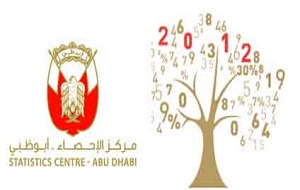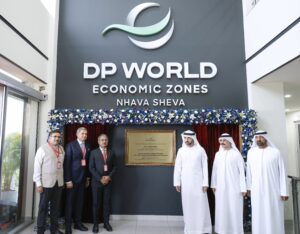
Statistics Centre – Abu Dhabi (SCAD) released today the Statistical Yearbook (SYB) of the Emirate of Abu Dhabi – 2014 in a press conference presented by Butti Al Qubaisi, Director General of SCAD. One of the Centre’s key publications, the SYB meets the needs of decision makers, the business community, researchers and all other segments of data users.
The book sheds light on a whole range of development indicators in Abu Dhabi, over the past few years, tracking the progress achieved under the wise leadership of His Highness Sheikh Khalifa bin Zayed Al Nahyan, President of UAE; and the unlimited support of His Highness General Sheikh Mohamed bin Zayed Al Nahyan, Crown Prince of Abu Dhabi and Deputy Supreme Commander of the Armed Forces and Chairman of Abu Dhabi Executive Council.
As SCAD’s Director General pointed out, the SYB 2014 consists of six main sections, namely, the economy, industry and business, population and demography, social statistics, labor force, agriculture and the environment.
Al Qubaisi added that the release of the SYB 2014 reflects SCAD’s continued efforts to further improve this publication in terms of data coverage, accuracy and presentation, in a way that would facilitate the study and analysis of their implications for the future and in working out integrated plans and strategies that support the emirate’s vision for sustainable development.
The GDP At the outset of the press conference Al Qubaisi indicated the Abu Dhabi’s 2013 GDP at current prices (Nominal GDP) is estimated at AED 953,239 million, compared with AED 909,721 million in 2012. This represents an annual growth rate of 4.8% in 2013 and 7.4% in 2012, which confirms the strength and resilience of the Emirate’s economy. Accordingly, the annual per capita gross domestic product amounted to AED 388.6 thousand in 2013. The total fixed capital formation was AED 193,900 million in 2013, while compensation of employees amounted to AED 182,416 million in the same year.
The GDP at constant prices increased by 5.2 percent in 2013, compared with an increase of 4.8% in 2012. The main activities contributing to economic growth in 2013, i.e. ‘Mining and quarrying’ (including crude oil and natural gas), ‘Real estate’ and ‘Financial and insurance’ increased by 3.2 percent, 12.9 percent and 11.2 percent, respectively.
Foreign Merchandise Trade Emphasizing the importance of foreign trade, Al Qubaisi noted that net trade in goods was equivalent to 44.3 percent of the GDP, reflecting the Emirate’s robust and highly developed level of commercial activity and the significance of foreign trade to the economy in general.
Commodity imports in goods through the ports of the Emirate Abu Dhabi were valued at AED 100.3 billion in 2013 compared with AED 119.0 billion in 2012. The largest imports category during 2013 was ‘Machinery, sound recorders, reproducers and parts’, which accounted for 23.2% of the total value. The United States of America was the top import partner, supplying the Emirate with goods worth AED 12.7 billion. Non-oil exports amounted to AED 16.0 billion, with ‘Base metals and articles of base metals’ contributing 49.7% of the total. Saudi Arabia was the top destination of Abu Dhabi’s non-oil exports, receiving goods worth AED 6.7 billion from the Emirate in 2013. Re-exports in 2013 were valued at AED 16.4 billion compared with AED 14.7 billion in 2012. The top category during 2013 was ‘Machinery, sound recorder, reproducers and parts’, which contributed 48.8% of the re-exports total. The Kingdom of Bahrain was the top destination for re-exports (AED 3.4 billion).
Merchandise imports from Asian countries through the ports of the Emirate of Abu Dhabi declined to AED 43.9 billion during 2013, down from AED 54.4 billion in 2012. Non-oil exports in goods to Asian countries through the ports of the Emirate of Abu Dhabi amounted AED 14.5 billion while re-exports to Asian countries amounted to AED 14.1 billion.
The Emirate of Abu Dhabi exported 1.0 billion barrels of crude oil in 2013. Japan was the top importer receiving around 36.5 percent of the Emirate’s total crude oil exports. In 2013, Abu Dhabi exported 10.0 million metric tons of refined petroleum products, of which Netherlands bought 24.7percent, followed by Japan, which purchased 15.8 percent.
with an increase by in 2013 compared with 2012 the LNG exports of Abu Dhabi grew by AED 1.8 billion to AED 20.1 billion. Japan was the largest importer of Abu Dhabi’s LNG, accounting for 54.6 percent the emirate’s LNG exports. On the other hand Emirate imported 833.2 billion cubic feet of natural gas in 2013, at a daily average of 2.3 billion cubic feet.
Prices Price statistics and consumer price indices provide data that are collected periodically by SCAD from different sources across the Emirate of Abu Dhabi.
The Consumer Price Index (CPI), which is compiled from these data sources, measures changes in the prices of goods and services between two periods of time, namely the base period and the comparison period. The CPI measures the annual and monthly inflation rates detailed by household type and welfare level. Key results from the 2013 CPI calculations were: In 2013 consumer inflation hovered around an average of 1.3 percent as a demonstrated by the rise in the CPI from 122.9 points in 2012 to 124.5 points in 2013.
The ‘Housing, water, electricity, gas and other fuels’ group contributed -3.0 percent to the overall annual percentage change in prices in 2013, translating a 0.1 fall in average price of this “heavy weight” group.
Financial Statistics In his review of the financial intermediation and insurance, Al Qubaisi indicated that the activity contributed 4.8 percent to the GDP in 2013, up from 4.5 percent in 2012. Registered banks dominated financial intermediation in Abu Dhabi, although there are a substantial number of non-bank financial institutions, such as holding companies, trusts, and financial leasing institutions. The majority of Abu Dhabi’s registered banks are subsidiaries or branches of overseas banks. The number of registered banks on December 31, 2013 totaled 51 banks, of which seven are based in Abu Dhabi.
The total value of shares traded on the Abu Dhabi Securities Exchange during 2013 amounted to AED 84.9 billion, equivalent to 8.9 percent of GDP. The market capitalization of shares in the Abu Dhabi stock market climbed 41.2 percent in 2013 compared with the previous year, despite the fact that the number of listed companies remained unchanged over the same period (66 companies).
Wages and Compensation In his comment of the SYB 2014 figures on compensation of employees, SCAD’s Director General emphasized the significance of this indicator for national accounts in particular and the economy in general, pointing to an increase in the total compensations of employees at current prices in all economic activities from AED 166,608 million in 2012 to AED 182,416 million in 2013.
Foreign Investment The measures taken by Abu Dhabi Government to establish favourable conditions for investment and enhance investor confidence continue to materialize, as evident from the growth in Foreign Direct Investment (FDI) at the end of 2012 was AED 60.9 billion up from AED 52.2 billion at the end of 2011. This increase could mainly be attributed to expansions in the “Mining and quarrying” activity, which attracted FDI worth AED 6.1 billion at the end of 2012, compared with AED1.9 billion at the end of 2011.
‘Real estate and business services’, (including sales of real property units to non-residents) accounted for the largest share of FDI at the end of 2012 (40.8 percent), compared with 42.2 percent at the end of 2011. “Manufacturing industries” accounted for the second largest share of total FDI, with 19.0 percent at the end of 2012, up from 17.6 percent at the end of 2011.
He indicated that FDI from the GCC region amounted to AED 1.8 billion or 3.0 percent of total FDI at the end of 2012, compared with AED 2.24 billion or 4.3 percent at the end of 2011. Investments from other Arab countries totaled AED 4.8 and AED 6.1 billion or 9.2 percent and 10.1 percent of FDI for the years 2011 and 2012, respectively.
Industry and Business As SCAD’s Director General indicated, the “Manufacturing” activity accounted for 5.7 percent of the GDP in 2013.
The gross fixed capital formation of the manufacturing activity advanced by 29.3 percent, from AED 28.3 billion in 2011 to AED 36.7 billion in 2012.
In the ‘Tourism’ activity, the total number of hotel establishments grew 15.4 percent to 150 in 2013 compared with 2012. Over the same period, the number of guests increased by 17.5 percent, the number of rooms by 18.2 percent and the occupancy rate by 8.6 percent, while the average length of stay was 3.1 nights.
In the ‘Transport’ activity, the number of passengers travelling through the Emirate’s airports totalled 16.8 million during 2013 compared with 15.0 million passengers in 2012.
In the ‘Information and communication technology” activity, the number of cellular phone subscriptions increased from 189 per 100 inhabitants in 2012 to 197 per 100 inhabitants in 2013, an increase of 4.2 percent.
A total of 8,657 new business licenses were issued in 2013, while 2,345 licenses were cancelled in same year.
Source : WAM News Agency for United Arab Emirates












